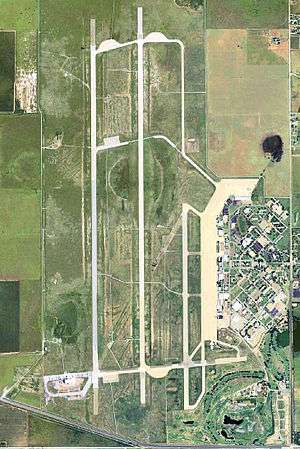Reese Air Force Base
| Reese Air Force Base Lubbock Air Force Base Lubbock Army Airfield  | |
|---|---|
| Part of Air Training Command (ATC) | |
| Lubbock County, near Lubbock, Texas | |
|
2006 USGS airphoto | |
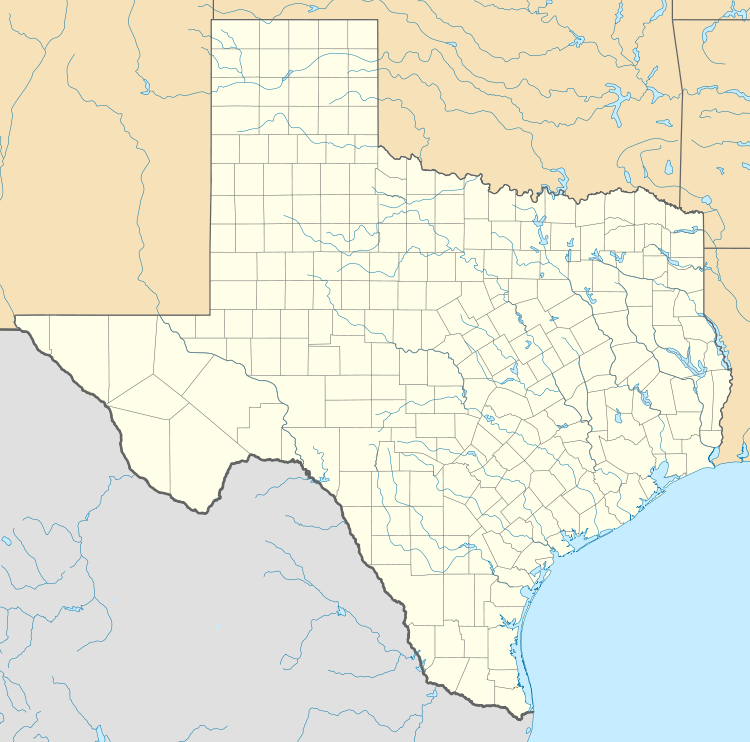 Reese AFB | |
| Coordinates | 33°35′33″N 102°02′10″W / 33.59250°N 102.03611°WCoordinates: 33°35′33″N 102°02′10″W / 33.59250°N 102.03611°W |
| Type | Air Force Base |
| Site information | |
| Controlled by | United States Air Force |
| Site history | |
| Built | 1941 |
| In use | 1941-1997 |
| Garrison information | |
| Garrison | Air Training Command |
| Occupants | 64th Flying Training Wing (1 October 1972 - 30 September 1997) |

Reese Air Force Base (IATA: REE, FAA LID: 8XS8) was a base of the United States Air Force located 6 mi west of Lubbock, Texas, about 225 mi WNW of Fort Worth. The base's primary mission throughout its existence was pilot training.
The base was closed 30 September 1997 after being selected for closure by the Base Realignment and Closure Commission in 1995 and is now a research and business park called Reese Technology Center.
History
Construction of the Air Corps Advanced Flying School began in August 1941 on land located about 10 miles (15 km) west of the city of Lubbock. Designed for training large numbers of flying cadets, Lubbock Field consisted of three 6,500' asphalt runways arranged in a triangular (N/S, NE/SW, E/W) pattern. It also controlled several auxiliary landing fields:
- West Lubbock Field, 32°25′15″N 102°46′12″W / 32.42083°N 102.77000°W (now Abandoned, oilfield)
- South Lubbock Field, 33°29′09″N 102°05′35″W / 33.48583°N 102.09306°W (now Abandoned, farmland)
- North Lubbock Field, 33°42′31″N 102°14′10″W / 33.70861°N 102.23611°W (now Abandoned, farmland)
- Opdyke Field, 33°32′55″N 102°11′34″W / 33.54861°N 102.19278°W (now Abandoned, farmland)
- Abernathy Field, 33°50′41″N 101°45′43″W / 33.84472°N 101.76194°W (now Abernathy Municipal Airport)
The school name changed to the Lubbock Army Flying School before the first class of aviation cadets reported. Construction continued for over two years of base facilities, being finally completed in mid-1944.
World War II
The Army Air Corps Advanced Flying School opened in early 1942, with flying commencing from the new airfield on 8 February 1942. The official dedication of the base took place on 21 June 1942. The first group of Aviation Cadets (class 42-0) reported on 25 February 1942 and graduated as single-engine pilots on 29 April 1942.

During World War II, the school used AT-7, AT-9, AT-l0, AT-17, and T -6 aircraft to train 7,008 pilots. Most of the graduates went on to fly multi-engined bombers, fighters, and other aircraft in every theater of the war.
Late in 1943 a vast expansion in instrument pilot training resulted in an increased need for instructors in that area. The existing instructors school at Bryan AAF Texas, was not able to take on the additional load, so on 4 February 1944, Lubbock Field, formally became the site of a second AAF Instructors School (Instrument Pilot), although the first class of instructors had already begun training on 10 January. This was made possible by the simultaneous termination of the advanced two-engine program at Lubbock. In late November, the two schools transferred to Barksdale Field, Louisiana.
With the end of World War II in September 1945, most of the temporary training bases such as Lubbock were put on inactive status and eventually closed. The War Department closed Lubbock Army Air Field on 31 December 1945, however it was retained in a standby status, with jurisdiction of the field being assigned to Goodfellow Field, Texas. It remained under Goodfellow until May 1947 when it was transferred to Randolph Field, Texas, and subsequently placed under the jurisdiction of the Army Corps of Engineers on 1 July 1949.
During the post-war years, the base was used as a meeting place for National Guard, Air Reserve, and Naval Reserve units. Barracks were converted to low rent apartment units for the use of veterans and their families while they attended Texas Technical College.[1] Most of the veterans were attending nearby Texas Technological College and could not find housing elsewhere. Vegetable gardens sprang up on drill fields where men had marched, and children skated or rode bicycles on the empty runways
3500th Pilot Training Wing


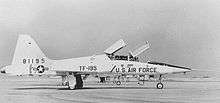
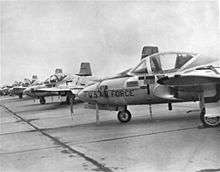
World events preceding the Korean War caused the reactivation of the base. Among these changes, the Air Training Command Barksdale Air Force Base, Louisiana, became a part of Strategic Air Command, which meant the 3500th Pilot Training Wing stationed at Barksdale had to find a new home. Lubbock was the site chosen. Among the many promises made by the Lubbock community to have the local base reopened was an agreement to deed the land to the United States government. Reactivation of the base became a reality on 1 August 1949. A month later, on 1 September, the 3500th Pilot Training Wing (Advanced Multi-Engine) moved from Barksdale to Lubbock.
The reactivated base was named Reese Air Force Base in honor of 1st Lt Augustus Frank Reese Jr. (1917–1943), of Shallowater, Texas on 5 November 1949. Lieutenant Reese, assigned to the 1st Fighter Group, was killed on 14 May 1943 near Cagliari, Sardinia, when his Lockheed P-38 Lightning struck the ground after a strafing run on a train.
Aviation cadets comprised the first classes to graduate after Reese had reactivated. Those students in Classes 50-A and 50-B came from primary training programs conducted by civilian contractors. They stayed at Reese for six months for advanced multi-engine training in T-6 and B-25 conventional aircraft. Graduation brought the award of silver wings to each graduate and commissions to the cadets.
In 1952 ATC implemented a four-phase pilot training program: pre-flight, primary, basic, and crew. Reese continued to provide advanced multi-engine training; however, it was now called basic multi-engine training. From December 1952 forward, most classes included students from various friendly foreign nations.
In 1959 ATC began phasing out its last World War II trainer, the TB-25 Mitchell which was used for multi-engine training. Almost 30,000 pilots had earned their wings in B-25 cockpits, logging nearly 2.5 million flying hours. With the graduation of the last B-25 class at Reese in January 1960, specialized UPT came to an end and generalized training began. The T-33 Shooting Star replaced the B-25 as the basic trainer aircraft, ushering in the jet age at Reese.
The T-33, a single-engine jet, was the only training aircraft at Reese from January 1959 until the T-37 Tweet arrived in March 1961. Reese offered only the basic phase of pilot training until the arrival of the T-37. Then Reese assumed full responsibility for training pilots through the preflight, primary, and basic phases. At about this time, Air Training Command began the undergraduate pilot training (UPT) program. The command closed its civilian contract training program and moved all pilot training in-house.
The last class with aviation cadets, Class 62-B, graduated on 14 September 1961. Cadets received commissions as officers, as well as silver wings. Since then, students arriving for pilot training already held their commission as officers. The supersonic T-38 Talon replaced the T-33 as the basic trainer in 1963 to permit qualification of pilots for quicker transition to larger and faster aircraft. The first Talon arrived at Reese on 26 January 1963, and Class 64-C claimed honors as Reese's first T-38 class.
From March 1965 to June 1973, Air Training Command used the T-41A Mescalero, a military version of the Cessna 172, as a flight screening aircraft. These flights were flown from what is now Lubbock International Airport. This first phase of primary training helped screen potential pilots and provided a stepping stone to help those with little or no flight experience to adapt to military flying. Later, manpower demands and fiscal constraints resulted in this training being consolidated at one location—Hondo, Texas. After Class 74-07, all classes required successful completion of this training or its equivalent before coming to Reese.
64th Flying Training Wing
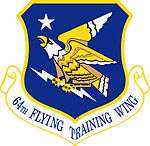
In 1973 ATC inactivated its four digit flying wings and replaced them with two-digit wings. All of the newly activated units then had a combat lineage. At Reese the 3500th PTW was re-designated the 64th Flying Training Wing on 1 October.
Reese began using the first operational instrument flight simulator in the command on 11 August 1977 with students in Class 78-06 and in T-37 instruction. The T-38 simulators followed on 27 February 1978 with Class 78-07. Mock cockpits provided a training medium for instrument flight, thus reducing the number of flying hours needed in training. Simulator training also resulted in substantial savings in fuel, aircraft wear and tear, and maintenance expenses.
As Reese entered the decade of the nineties, many changes were taking place. Aircraft maintenance converted from a military operation to a civilian contractor in August 1989. Lockheed Support Systems, Inc., won the contract. The changeover began in December and was completed in March 1990. Following the maintenance conversion, Air Training Command inactivated the 64th Organizational Maintenance and the 64th Field Maintenance Squadrons. Those actions resulted in the loss of approximately 900 "blue suiters" at Reese.
The wing converted to a five-squadron training structure in 1990. On 9 January Air Training Command inactivated the 64th Student Squadron and transferred its duties to the newly activated 41st Flying Training Squadron. Two additional squadrons, the 33d and 52d Flying Training Squadrons, activated on 11 May 1990. They joined the 35th and 54th Flying Training Squadrons, which had been active since October 1972. This configuration was to accommodate future changes in the way undergraduate pilot training would be conducted.
Air Training Command again chose Reese to pioneer two new programs: specialized undergraduate pilot training (SUPT) and the T-1A Jayhawk. The T-1A was the first new training aircraft added to the Air Force inventory in 30 years. It arrived at Reese on 18 January 1992. An aircraft and training systems testing phase for the T-1A, plus completion of instructor pilot training courses, preceded student instruction in the new aircraft.
In March the T-1As began arriving at Reese on a regular basis. The 64th Flying Training Wing received four aircraft that first month, three T-1As in April, and five more in May. By the end of the year, the wing had a total of 24 aircraft. Many of those aircraft were used for extensive testing conducted first by the Air Force Operational Test and Evaluation Center and then by the initial cadre of instructor pilots assigned to the 64th. The wing began flying local sorties to test syllabus maneuvers and aircraft effectiveness on 9 March. Several Course Readiness Reviews and Start Training Readiness Reviews looked not just at the aircraft but also at other elements of the tanker-trainer training system, such as simulators and the Training Management System. In general, the 64th Flying Training Wing still had some wrinkles to iron out but was far enough along that it began the Instructor Transition Course on schedule in September. The course was designed to train T-37 and T-38 instructor pilots (IP) to be T-1A IPs; the initial cadre (who had received their training from Beech) taught the course. Meanwhile, the first SUPT class, Class 93-12, was already in training. It began Phase I training on 20 July 1992 and would begin T-1A and T-38 training on 4 January 1993. The first training sortie took place on 19 February 1993. The first T-1A class, graduated on 29 July 1993, with 30 students earning silver wings.
The first SUPT class with graduates entering Introduction to Bomber Fundamentals (IBF) began training at Reese AFB in December 1993. The course was designed to provide bomber pilots with classroom and simulator training in crew coordination, crew concept, and low-level flying procedures. Navigators and electronic warfare officers also attended the course. The first two Navy students arrived at Reese AFB in September 1994 for joint specialized undergraduate pilot training.
Modern era and closure
The Base Realignment and Closure Commission indicated the base for closure in 1995, as a casualty of the fifth round of base closure in the post-Cold War period.
The last class (97-04) graduated from Reese on 24 January 1997. During this last phase of operation, Reese had about 200 aircraft which were used in the Joint Specified Undergraduate Pilot Training Program. During its operational lifetime, the flying training school at Reese Air Force Base had trained a total of 25,349 pilots.
Reese AFB closed on 1 October 1997. AETC inactivated its host unit, the 64th Flying Training Wing on 30 September 1997. Reese’s flying training mission was divided among the remaining three undergraduate pilot training bases.
Currently, the city of Lubbock has designated it as a research and business park named Reese Technology Center. There is an office of the police academy there, and South Plains College uses some of the facilities for classes. The Reese Technology Center is also located on the site of the former base. In addition, the runways are used by model airplane pilots. It recently hosted "Jetfest", an event centered around model jet airplanes. The base is also unique in that it has a football field and track on its premises.
Previous Names
- Air Corps Advanced Flying School, Lubbock, 11 August 1941
- Lubbock Army Flying School, 6 February 1942
- Lubbock Army Airfield, 26 April 1943
- Lubbock Air Force Base, 13 January 1948
- Reese Air Force Base, 5 November 1949 – 30 September 1997
Major commands assigned
- Gulf Cont Air Corps Training Center, June 1941 - 23 January 1942
- Air Corps Flying Training Command, 23 January 1942 - 15 March 1942
- AAF Flying Trraining Command, 15 March 1942 - 31 July 1943
- AAF Training Comd, 31 July 1943 - 31 December 1945
- Air Training Command, 1 July 1946 - 1 June 1992
- Air Education and Training Command 1 June 1992 - 30 September 1997
Major units assigned
- 83d Air Base Gp, 1 August 1941 - 6 November 1941
- 84th Air Base Sq, 6 November 1941 - 10 June 1942
- 84th Base HQ and Air Base Sq, 10 June 1942 - 1 May 1944
- Army Air Forces Advanced Flight School (Advanced Twin-Engine), 26 July 1942 – 31 December 1945.
- 2526th AAF Base Unit, 1 May 1944 - 31 December 1945
- USAF Basic Pilot School (Multi-Engine), 1 October 1949
- Re-designated USAF Basic Pilot School (Single-Engine), January 1959-5 January 1961
- 3500th Pilot Training Wing, 1 October 1949 – 1 October 1972
- 3500th Pilot Training Squadron, 26 September 1949-1 October 1972
- 3501st Pilot Training Squadron, 26 September 1949-1 October 1972
- 64th Flying Training Wing, 1 October 1972 - 30 September 1997
- 35th Flying Training Squadron, 1 October 1972-1 October 1992 (T-37 Tweet)
- 54th Flying Training Squadron, 1 October 1972-30 September 1997 (T-38 Talon)
- 41st Flying Training Squadron, 10 January 1990-15 May 1997 (T-1A Jayhawk)
- 33d Flying Training Squadron, 11 May 1990 – 1 October 1992 (T-37 Tweet)
- 52d Flying Training Squadron, 11 May 1990 – 1 April 1997 (T-38 Talon)
See also
- Texas World War II Army Airfields
- 33d Flying Training Wing (World War II)
- Air Training Command
- Reese Technology Center
References
| Wikimedia Commons has media related to Reese Air Force Base. |
| Wikimedia Commons has media related to Lubbock Army Airfield. |
![]() This article incorporates public domain material from the Air Force Historical Research Agency website http://www.afhra.af.mil/.
This article incorporates public domain material from the Air Force Historical Research Agency website http://www.afhra.af.mil/.
- Maurer, Maurer (1983). Air Force Combat Units Of World War II. Maxwell AFB, Alabama: Office of Air Force History. ISBN 0-89201-092-4.
- Maurer, Maurer, ed. (1982) [1969]. Combat Squadrons of the Air Force, World War II (PDF) (reprint ed.). Washington, DC: Office of Air Force History. ISBN 0-405-12194-6. LCCN 70605402. OCLC 72556.
- Shaw, Frederick J. (2004), Locating Air Force Base Sites History’s Legacy, Air Force History and Museums Program, United States Air Force, Washington DC, 2004.
- Active Air Force Bases Within the United States of America on 17 September 1982 USAF Reference Series, Office of Air Force History, United States Air Force, Washington, D.C., 1989
External links
- Unofficial Homepage (source of History)
- Archive, 1940-1997 and undated, in the Southwest Collection/Special Collections Library at Texas Tech University See also Hannah, Craig, in SWC Manuscript Collection.
